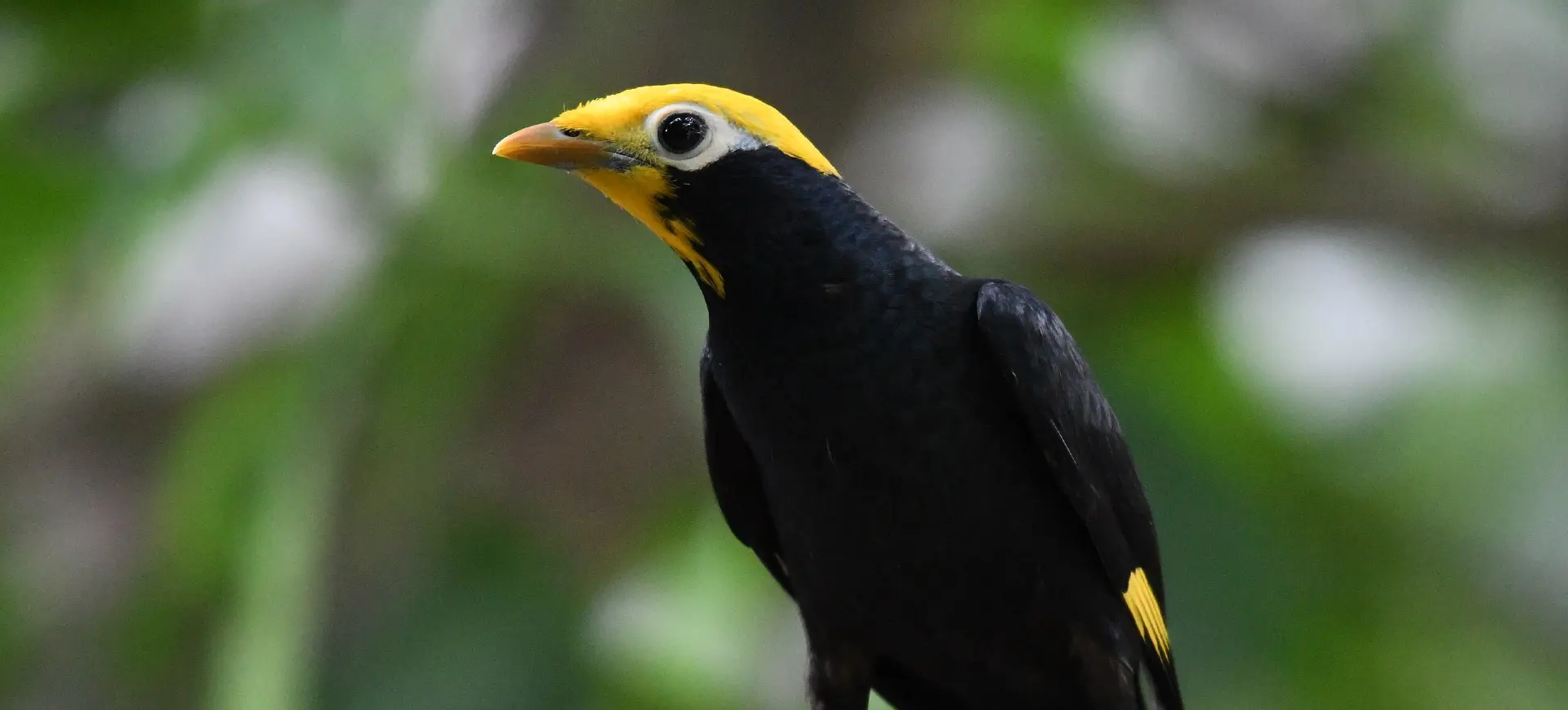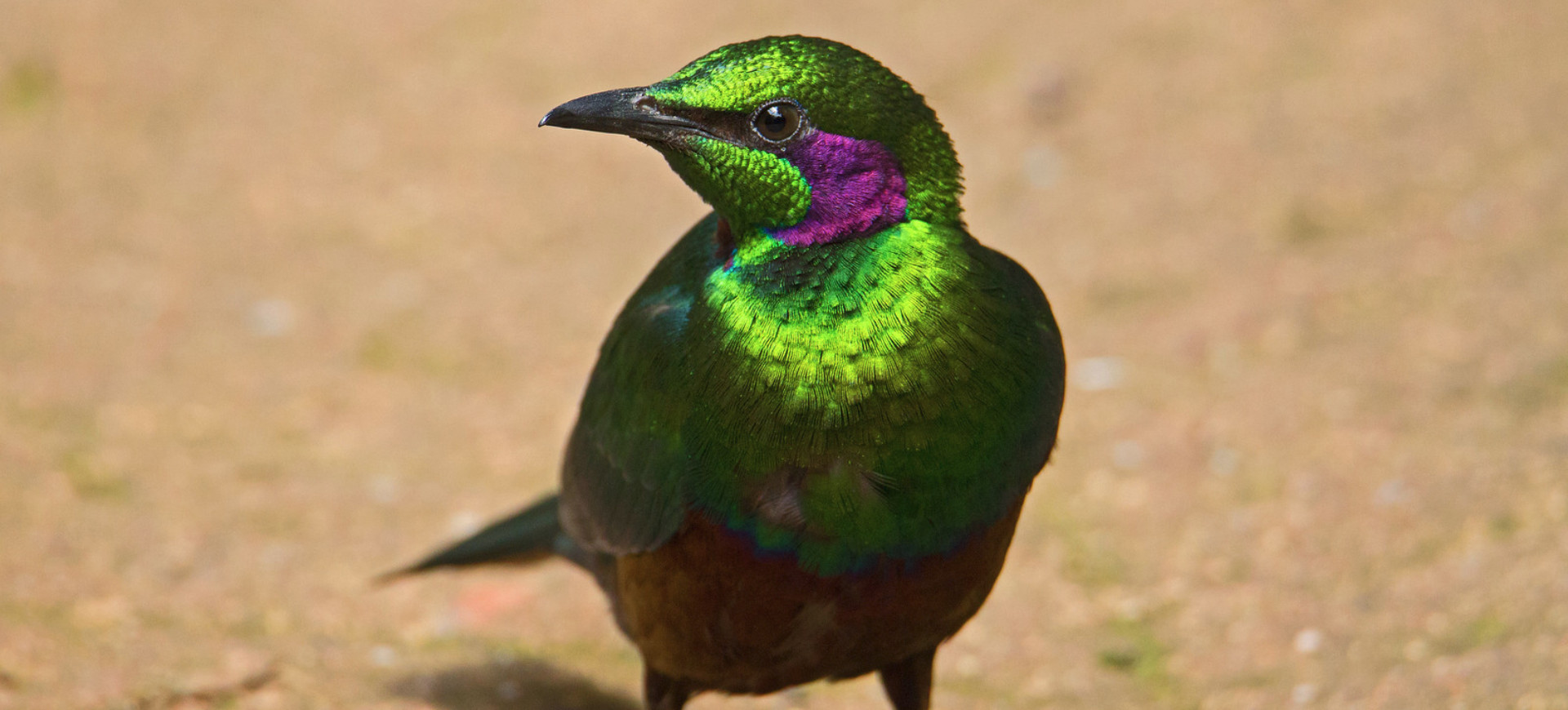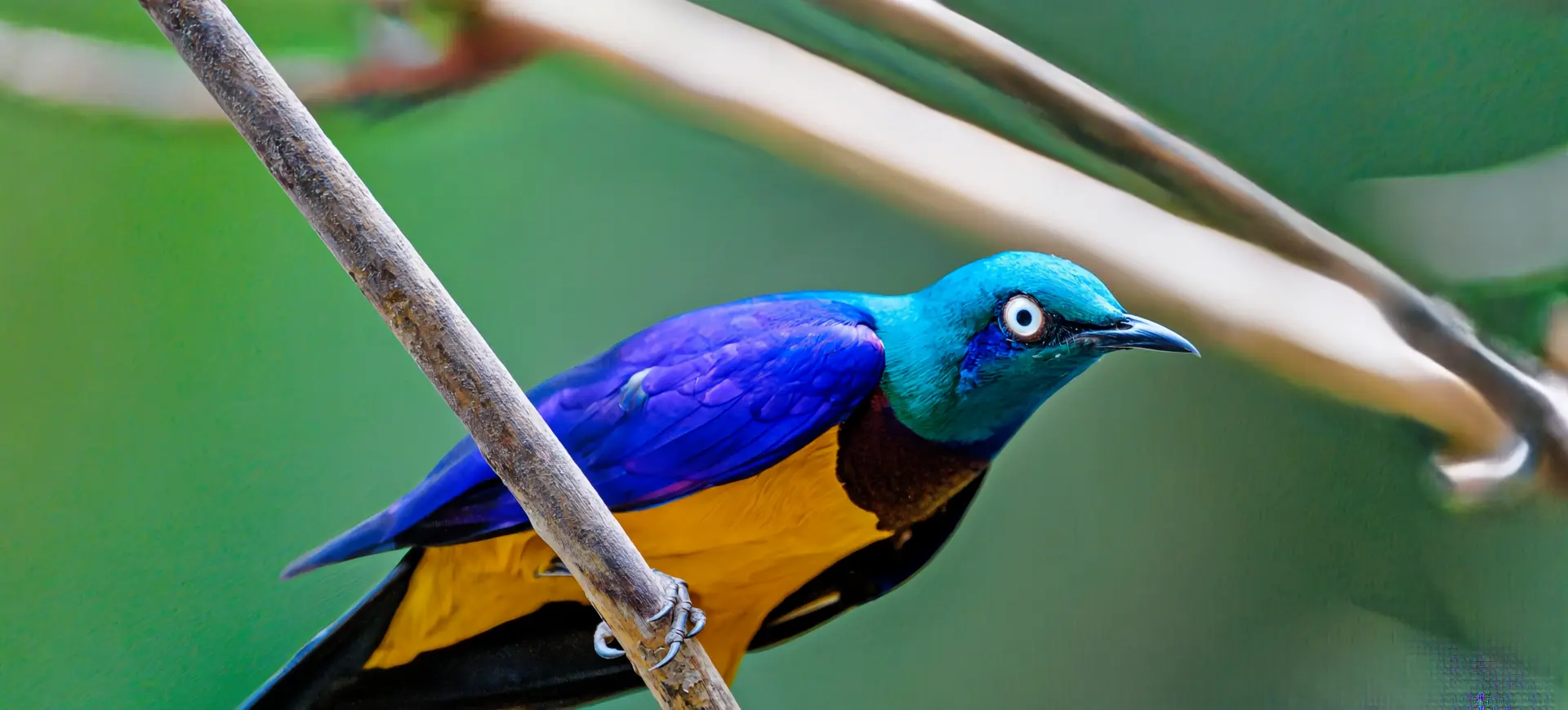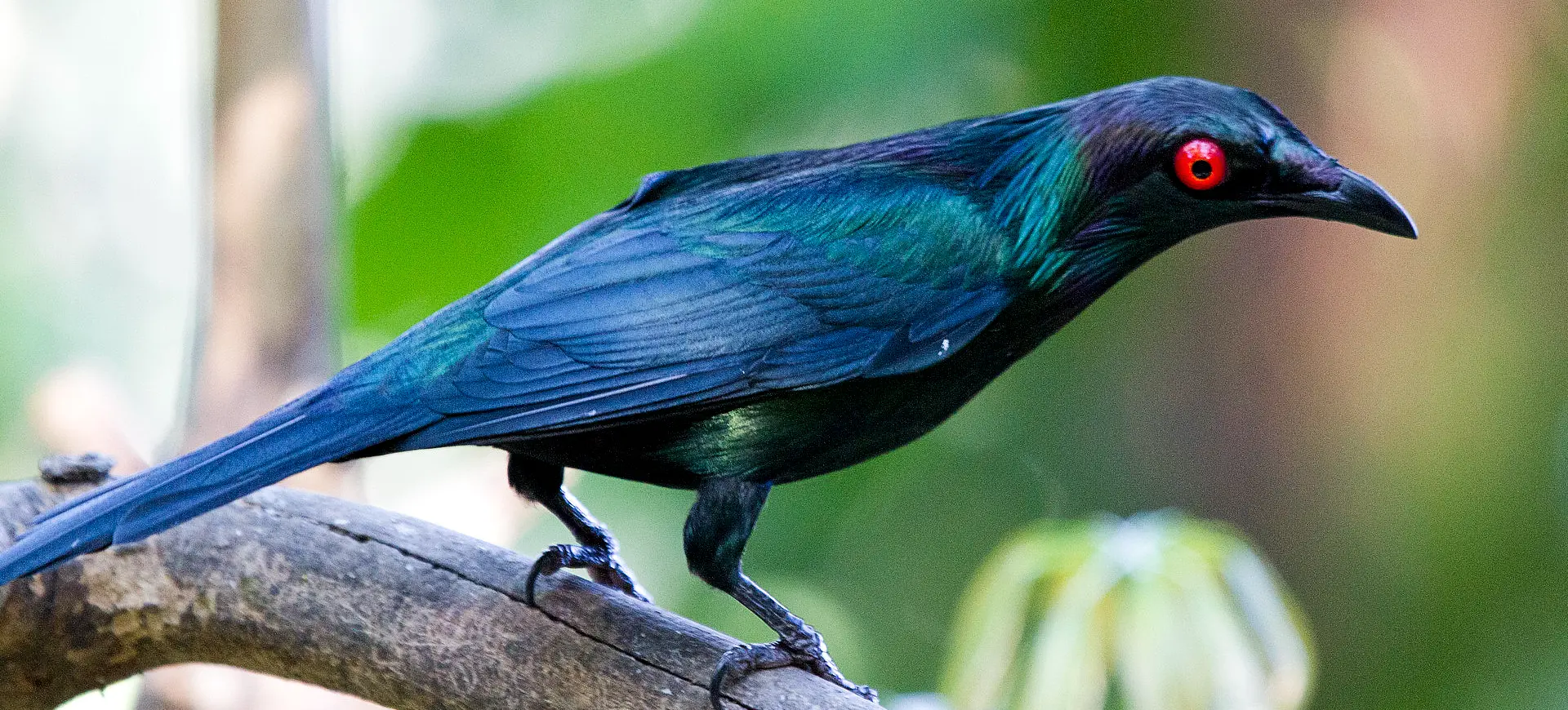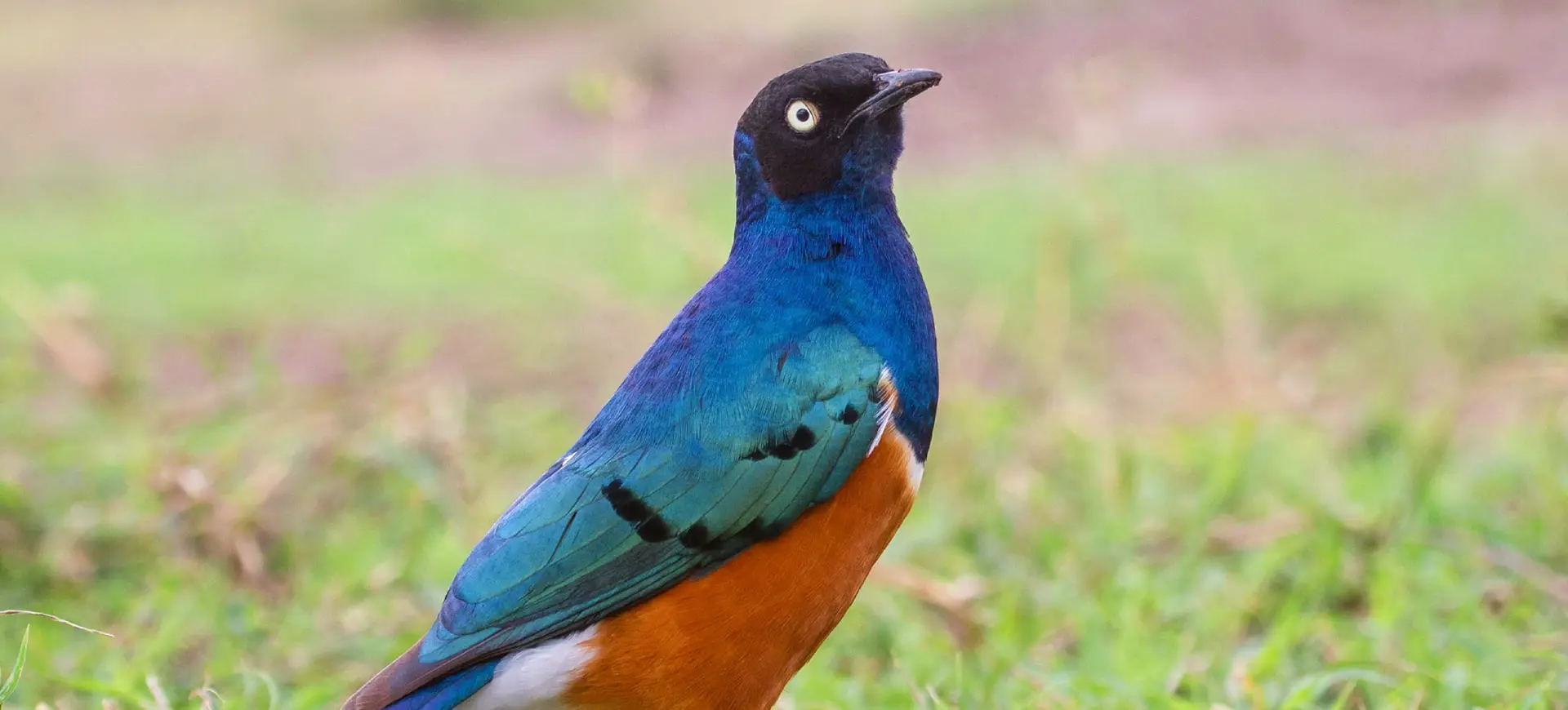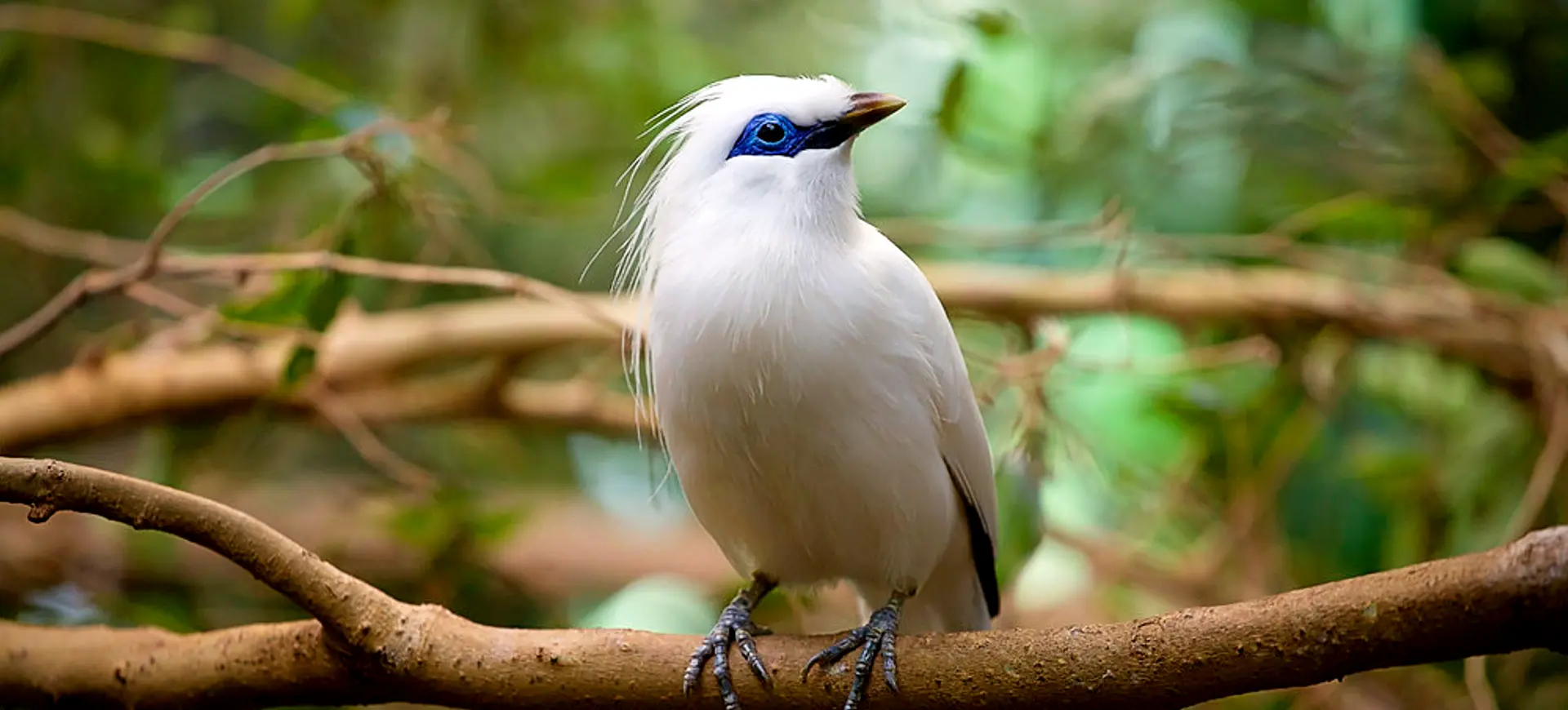Overview
The Violet-backed Starling, also known as the Plum-coloured Starling or Amethyst Starling, is a small passerine bird in the starling family, distinguished by its striking sexual dimorphism. Males boast a vibrant violet to iridescent plum back, contrasting sharply with their white underparts, making them one of the most visually striking starlings. Conversely, females have a more subdued coloration, with brownish upperparts and lighter underparts, allowing them to blend into their surroundings easily. This species is known for its gregarious nature, often forming large flocks outside the breeding season. It is found across sub-Saharan Africa, migrating and breeding in various regions depending on the season.
The Violet-backed Starling is an adept flyer, capable of swift and agile movements in the air. It feeds primarily on fruits, nectar, and insects, foraging in the canopy and on the ground, showcasing its versatile feeding habits. The bird’s diet varies seasonally, with a preference for figs and other soft fruits during certain times of the year and insects becoming a more significant part of the diet during the breeding season. Its feeding behavior is crucial in seed dispersal and controlling insect populations, making it an important species in its ecosystem.
Conservation-wise, the Violet-backed Starling is considered of Least Concern due to its wide range and large, stable populations. However, like many other bird species, it faces habitat destruction and degradation threats, especially in areas where forested areas are being cleared for agriculture or urban development. Its resilience and adaptability to different habitats, including wooded savannas, open forests, and even human-modified landscapes, have helped it maintain stable population numbers. Still, ongoing monitoring and habitat conservation efforts are essential to ensure its long-term survival.
Taxonomy
Kingdom
Phylum
Class
Order
Family
Genus
Species
Sub Species
Type
Physical Description:
The Violet-backed Starling is a small bird, with males displaying a stunning iridescent violet back that shines brilliantly in sunlight, a unique feature among starlings. Their white underparts provide a stark contrast, making them easily identifiable in their natural habitat. The female’s appearance is markedly different, with a more hidden look consisting of brown upperparts and slightly lighter, streaked underparts designed to blend into the nest surroundings. Both sexes have sharp, pointed bills and strong legs, reflecting their adaptability to different feeding and nesting behaviors.
The bird measures approximately 7 to 7.5 inches, with a weight range typically from 1.6 to 1.9 oz (45 to 55 grams). Despite the sexual dimorphism in coloration, both sexes are similar in size, making size a less reliable indicator for distinguishing males from females than other bird species. Their wingspan is modest, suited to their agile flying and maneuvering through dense foliage for food. The Violet-backed Starling’s physical characteristics serve aesthetic purposes and play vital roles in their survival and breeding success.

Lifespan: Wild: ~8 years || Captivity: ~10 years

Weight: Male: 1.6-1.9 oz (45-55 g) || Female: 1.6-1.9 oz (45-55 g)

Length: Male: 7-7.5 in (18-19 cm) || Female: 7-7.5 in (18-19 cm)

Wingspan: Male & Female: 12–14 inches (30–35 cm)

Top Speed: 20 mph (32 km/h)
Characteristic:
Native Habitat:
The Violet-backed Starling inhabits various woodland, savanna, and forest edge habitats across sub-Saharan Africa. It prefers areas with abundant fruiting trees and shrubs and access to open spaces for foraging. The species is highly migratory, with movements tied to the availability of food resources, demonstrating its adaptability to seasonal changes in its environment. During the breeding season, it often selects nesting sites in tree cavities or abandoned nests of other birds, showing a preference for areas that offer protection from predators and the elements.
This starling’s ability to thrive in various habitats, from dense forests to woodland savannas and even agricultural lands, underscores its versatility and resilience. The bird’s presence in various habitats reflects its ecological adaptability and role in supporting the health and diversity of ecosystems through its feeding and nesting behaviors.
Climate Zones:
Biogeographical Realms:
Continents:
Countries:
Diet:
Diet & Feeding Habits:
The Violet-backed Starling’s diet consists primarily of fruits, nectar, and insects, reflecting its omnivorous feeding habits. This diet allows it to exploit a range of food sources throughout its habitat, from figs and small fruits to the nectar of flowering trees and various insects, which are especially important during the breeding season for feeding chicks. The bird’s foraging behavior is versatile, capable of feeding while perched in foliage or on the wing, and it is known to visit fruiting trees and shrubs in natural and cultivated landscapes.
In addition to its role as a consumer, the Violet-backed Starling plays a significant role in its ecosystem as a pollinator and seed disperser. Feeding on nectar helps pollinate flowers, and its consumption of fruit contributes to seed dispersal, aiding in the regeneration of plant life. The bird’s adaptability in feeding habits and diet preferences highlights its importance in maintaining ecological balance and promoting biodiversity within its habitat.
Mating Behavior:
Mating Description:
Violet-backed Starlings are monogamous during the breeding season, with pairs forming strong bonds and working together to raise their young. The male’s vibrant plumage plays a crucial role in courtship, attracting females with its iridescent colors. Nesting sites are typically located in tree cavities or in the abandoned nests of other birds, where females lay 2 to 4 eggs. Both parents share responsibilities for incubation and feeding, demonstrating a high level of parental care that is essential for the survival of their offspring.
The breeding season varies across different regions and is timed with the availability of food resources to ensure ample nourishment for the chicks. After hatching, the chicks are fed a diet rich in insects, providing them with the necessary protein for rapid growth. This cooperative breeding strategy, combined with the selection of secure nesting sites, enhances the survival prospects of the young, contributing to the species’ success across its wide range.
Reproduction Season:
Birth Type:
Pregnancy Duration:
Female Name:
Male Name:
Baby Name:
Social Structure Description:
The Violet-backed Starling exhibits a gregarious nature outside the breeding season, forming large flocks that can include hundreds of individuals. These flocks are often mixed with other starling species, reflecting the bird’s social behavior and ability to interact with conspecifics and other birds. During the breeding season, however, they become more territorial and solitary, with pairs focusing on raising their young in isolated nests. The transition from solitary to gregarious behavior underscores the species’ adaptability and social complexity.
The strong pair bonds formed during the breeding season are crucial for successful reproduction, with both males and females participating actively in nest building, incubation, and feeding of the chicks. This cooperative approach to parenting ensures a high survival rate for the offspring, contributing to the stability of the species populations. The Violet-backed Starling’s social structure and behaviors reflect its ecological adaptability and significantly influence its success across diverse African landscapes.
Groups:
Conservation Status:
Population Trend:
The Violet-backed Starling is currently classified as Least Concern by the IUCN, reflecting its wide distribution and stable population across sub-Saharan Africa. Its ability to adapt to various habitats, from woodlands to agricultural landscapes, has enabled it to maintain healthy population levels despite environmental changes. The species benefits from its migratory behavior, which allows it to exploit different regions and food sources throughout the year, contributing to its resilience and stability.
While the population is stable, local declines may occur due to habitat destruction, pesticide use, and other human-induced changes. Continuous monitoring and habitat conservation are essential to ensure the long-term survival of the Violet-backed Starling. Efforts to preserve woodland and savanna habitats and promote sustainable agricultural practices can help mitigate potential threats to this species.
Population Threats:
The main threats to the Violet-backed Starling include habitat destruction due to agricultural expansion, deforestation, and urbanization. These activities can lead to the loss of nesting sites and food sources, impacting the bird’s ability to breed and sustain its population. Additionally, pesticide use in agriculture can reduce insect populations, limiting the availability of essential food resources for chicks and adults alike.
Despite these threats, the Violet-backed Starling’s adaptability and migratory behavior have enabled it to cope with changing environmental conditions. Conservation efforts focused on habitat preservation and sustainable land use practices are crucial for mitigating the impacts of human activity on this species and ensuring its continued success across its range.
Conservation Efforts:
The Violet-backed Starling’s conservation efforts focus on habitat preservation and sustainable land use practices. Protecting woodland and savanna habitats from deforestation and degradation is essential for maintaining the bird’s food sources and nesting sites. Promoting sustainable agriculture, which minimizes pesticide use and conserves natural vegetation, can also benefit the Violet-backed Starling and other wildlife.
Education and awareness programs aimed at local communities can help foster a greater appreciation for the species and its ecological role, encouraging conservation actions that support biodiversity. While targeted conservation programs for the Violet-backed Starling may not be extensive, its status as Least Concern highlights the effectiveness of current efforts and the importance of continued vigilance to ensure its populations remain stable and healthy.
Additional Resources:
Fun Facts
- The Violet-backed Starling is one of the few bird species where the male is more brightly colored than the female, a particularly striking trait during the breeding season.
- It is a migratory bird, with movements closely linked to food availability, showcasing its adaptability to different environments.
- The species plays a vital role in its ecosystem, acting as a pollinator and seed disperser through its diet of fruits and nectar.
- Despite its vibrant coloration, the male Violet-backed Starling can be surprisingly difficult to spot in the dense foliage of its preferred habitats.
- The bird’s gregarious nature outside of the breeding season leads to the formation of large, mixed-species flocks, a behavior that provides safety in numbers from predators.
- It has a varied repertoire of songs and calls used for communication within flocks and during courtship displays.
- The Violet-backed Starling can consume large amounts of fruit, making it an important agent for seed dispersal in its habitat.
- Its iridescent plumage results from microscopic structures in the feathers that refract light, creating the vibrant violet coloration.
- The species’ adaptability to different habitats has allowed it to thrive across a wide range of environments in sub-Saharan Africa.
- In addition to its ecological roles, the Violet-backed Starling is also appreciated for its aesthetic value, adding a splash of color to the landscapes it inhabits.








